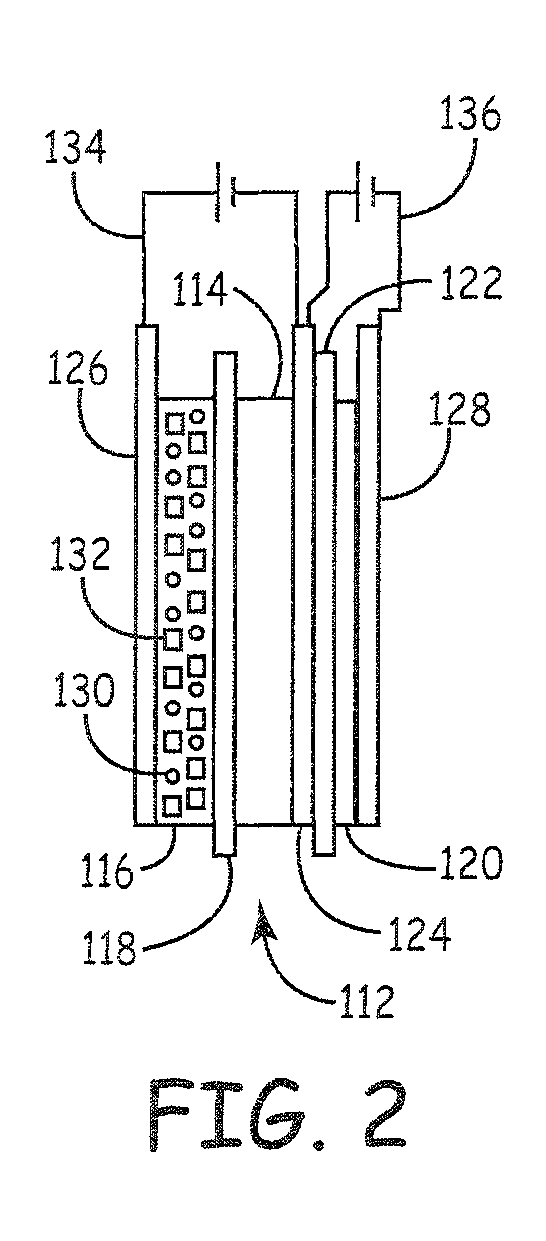Lithium ion batteries with supplemental lithium
a lithium-ion battery and lithium-ion technology, applied in manganates/permanentates, primary cell maintenance/service, sustainable manufacturing/processing, etc., can solve the problems of low energy density of battery cells and no significant improvement in energy density
- Summary
- Abstract
- Description
- Claims
- Application Information
AI Technical Summary
Benefits of technology
Problems solved by technology
Method used
Image
Examples
example 1
Synthesis of Cathode Active Material
[0135]This example demonstrates the formation of a desired positive electrode active material using a carbonate or hydroxide co-precipitation process.
[0136]Stoichiometric amounts of metal precursors were dissolved in distilled water to form an aqueous solution with the metal salts in the desired molar ratios. Separately, an aqueous solution containing Na2CO3 and / or NH4OH was prepared. For the formation of the samples, one or both solutions were gradually added to a reaction vessel to form metal carbonate or hydroxide precipitates. The reaction mixture was stirred, and the temperature of the reaction mixture was kept between room temperature and 80° C. The pH of the reaction mixture was in the range from 6-12. In general, the aqueous transition metal solution had a concentration from 1M to 3M, and the aqueous Na2CO3 / NH4OH solution had a Na2CO3 concentration of 1M to 4M and / or a NH4OH concentration of 0.2-2M. The metal carbonate or hydroxide precipi...
example 2
Formation of Metal Fluoride Coated Positive Electrode Materials
[0141]As described in this example, a portion of the lithium metal oxide (LMO) composition synthesized as described in Example 1 were coated with a thin layer of either aluminum fluoride (AlF3) or magnesium fluoride (MgF2). With respect to aluminum fluoride coatings, for a selected amount of aluminum fluoride, an appropriate amount of saturated solution of aluminum nitrate was prepared in an aqueous solvent. The lithium metal oxide particles were then added into the aluminum nitrate solution to form a mixture. The mixture was mixed vigorously for a period of time to homogenize. The length of mixing depends on the volume of the mixture. After homogenization, a stoichiometric amount of ammonium fluoride was added to the homogenized mixture to form aluminum fluoride precipitate while retaining the source of fluorine. Upon the completion of the precipitation, the mixture was stirred at 80° C. for 5 h. The mixture was then fi...
example 3
Battery Formation
[0143]This example describes the formation of coin cell batteries comprising a positive electrode comprising lithium metal oxide (LMO) and a negative electrode comprising graphitic carbon.
[0144]A positive electrode was formed from LMO oxide powders. Lithium metal oxide powders were synthesized as described in Example 2. The LMO powders were mixed thoroughly with acetylene black (Super P™ from Timcal, Ltd, Switzerland) and graphite (KS 6™ from Timcal, Ltd) to form a homogeneous powder mixture. Separately, Polyvinylidene fluoride PVDF (KF1300™ from Kureha Corp., Japan) was mixed with N-methyl-pyrrolidone (Sigma-Aldrich) and stirred overnight to form a PVDF-NMP solution. The homogeneous powder mixture was then added to the PVDF-NMP solution and mixed for about 2 hours to form homogeneous slurry. The slurry was applied onto an aluminum foil current collector to form a thin wet film and a positive electrode material was formed by drying the laminated current collector in...
PUM
| Property | Measurement | Unit |
|---|---|---|
| temperature | aaaaa | aaaaa |
| charge/discharge rate | aaaaa | aaaaa |
| voltages | aaaaa | aaaaa |
Abstract
Description
Claims
Application Information
 Login to View More
Login to View More - R&D
- Intellectual Property
- Life Sciences
- Materials
- Tech Scout
- Unparalleled Data Quality
- Higher Quality Content
- 60% Fewer Hallucinations
Browse by: Latest US Patents, China's latest patents, Technical Efficacy Thesaurus, Application Domain, Technology Topic, Popular Technical Reports.
© 2025 PatSnap. All rights reserved.Legal|Privacy policy|Modern Slavery Act Transparency Statement|Sitemap|About US| Contact US: help@patsnap.com



